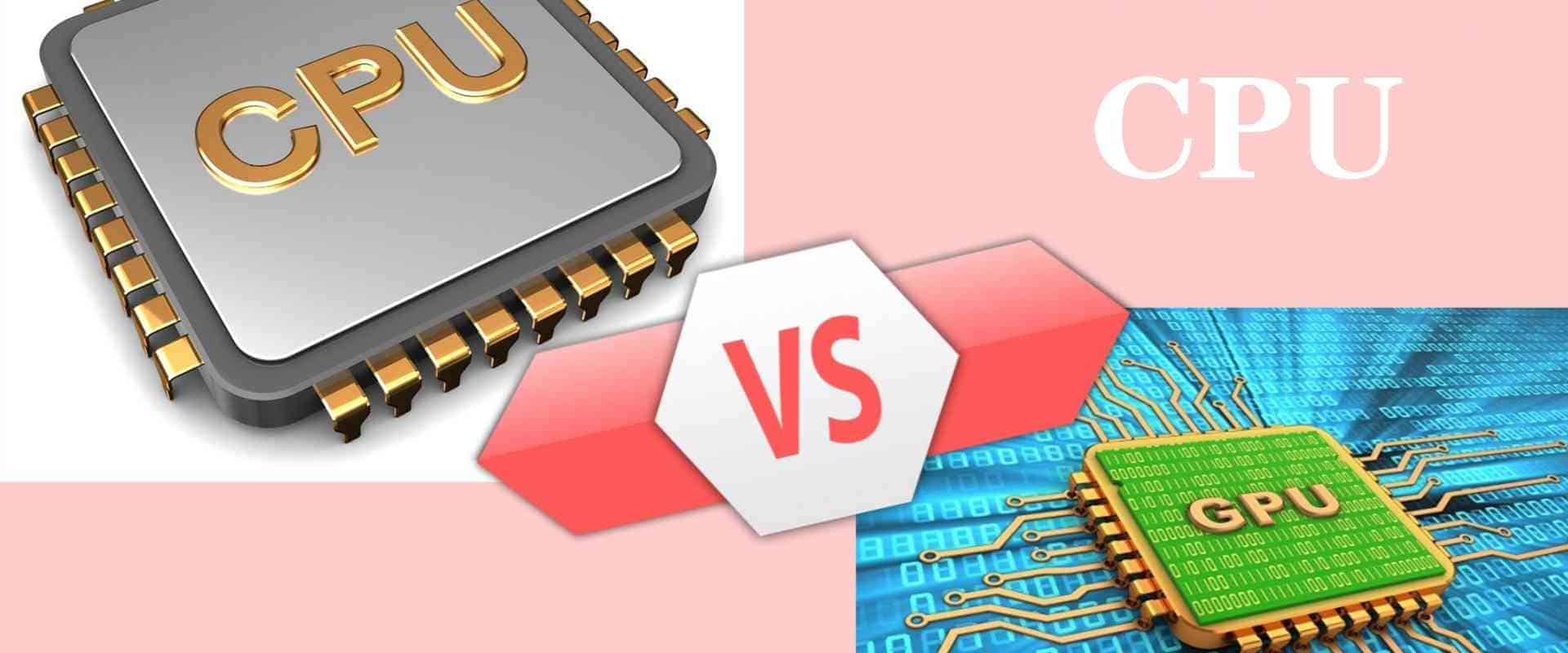Introduction
Choosing the right components for a gaming laptop can significantly impact its performance and gaming experience. Among the crucial decisions is selecting between a GPU (Graphics Processing Unit) and a CPU (Central Processing Unit), each offering distinct advantages depending on the user’s needs and preferences.
Understanding the differences between these components is essential for making informed decisions when configuring a gaming laptop.
In this article we explore the roles of CPU and GPU in our laptops so that one can take an informed decision while buying.
Follow us on Linkedin for everything around Semiconductors & AI
Overview of the article
- GPU vs CPU
- Understanding the GPU
- Understanding the CPU
- Practical recommendations
CPU vs GPU
When comparing GPUs to CPUs, the GPU carries greater significance, especially in the realm of modern gaming. Today’s games impose hefty demands on graphics performance, with the GPU taking charge of processing and rendering visuals crucial for delivering immersive gaming experiences.
On the other hand, the CPU primarily handles essential processing tasks. To achieve optimal gaming performance, a well-balanced setup involves pairing a mid-range CPU with a gaming-optimized GPU. While the GPU plays a starring role in enhancing gaming performance, it is crucial for both components to be robust enough to avoid performance bottlenecks.
| CPU | GPU |
|---|---|
| Central Processing Unit | Graphics Processing Unit |
| General-purpose | Specialized for parallel processing tasks |
| Fewer cores, optimized for sequential tasks | Many cores, optimized for parallel processing |
| Higher single-threaded performance | Lower single-threaded performance |
| Used for a wide range of tasks | Primarily used for graphics rendering and AI tasks |
| Suitable for tasks requiring low latency | Suitable for tasks with high throughput and data parallelism |
| Expensive per core | More cost-effective for parallel workloads |
| Found in most computers and servers | Often found in gaming consoles, supercomputers, and AI systems |
This table provides a concise comparison between CPUs (Central Processing Units) and GPUs (Graphics Processing Units) across various characteristics, outlining their differences in design, performance, use cases, and cost-effectiveness.
Read More: 4 Ways AI-Powered NPUs Are Taking Games to the Next Level – techovedas
Understanding GPUs
The GPU is a vital component known for its prowess in visual processing within the computing landscape. Engineered for parallel processing, the GPU thrives in tasks requiring swift rendering and mathematical computations.
Although traditionally associated with graphics rendering, GPUs have since broadened their scope to cater to various computational tasks. In the gaming sphere, GPUs exploit parallelism and specialized cores to handle intricate processes like lighting, rendering techniques, and complex shading concurrently. These capabilities contribute to creating immersive gaming environments, complete with advancements such as ray tracing, an advanced lighting simulation technology.
Moreover, GPUs enhance realism by accurately representing reflections and shadows, enriching visual fidelity.
Let’s explore the key functions and significance of GPUs in a gaming laptop.
Graphics Rendering: GPUs specialize in rendering images and graphics efficiently, facilitating immersive and realistic visual experiences in games. They manage dynamic lighting, reflections, shadows, particle effects, and high-resolution textures, contributing to lifelike virtual worlds.
Frame Rates: GPUs impact frame rates in games, with higher rates translating to smoother gameplay, reduced motion blur, and enhanced responsiveness. A powerful GPU maintains high frame rates even in demanding scenarios, ensuring enjoyable gameplay.
Resolution and Visual Quality: Gamers often prefer maximum graphical settings and high-resolution displays for optimal immersion. Powerful GPUs handle higher resolutions without compromising performance or visual fidelity.
Deep Learning Super Sampling (DLSS) and Ray Tracing: Modern GPUs incorporate DLSS and ray tracing technologies, demanding immense computational power for enhanced gaming experiences.

DLSS (Deep Learning Super Sampling) uses AI to upscale lower-resolution images to higher resolutions in real-time. This results in higher FPS and improved image quality in games, often surpassing native resolution rendering without DLSS. This technology is available on all GeForce RTX graphics cards from Nvidia, thanks to their dedicated AI Tensor Cores.
Streaming and Content Creation: GPUs with hardware encoding capabilities improve video quality during streaming, allowing smooth gameplay while creating content.
Read more 3 Most Anticipated Graphic Card Launches of 2024 – techovedas
VR and AR Gaming: Virtual reality (VR) and augmented reality (AR) necessitate substantial computing power for rendering separate eye images in VR and overlaying virtual elements in AR. A potent GPU ensures immersive and seamless VR and AR experiences.
Physics Simulation: GPUs support physics simulations, enhancing game realism by depicting authentic interactions between characters, objects, and environments.
Future Proofing: As game designers push graphical limits, a powerful GPU ensures compatibility with upcoming games, extending the system’s longevity and enhancing visual fidelity.
While we see PC games as a visual phenomenon, our computer sees it as simultaneous calculations.
Understanding the CPU
At the heart of every laptop lies the CPU, the central processing unit essential for a computer’s functionality. While GPUs specialize in parallel processing, CPUs thrive in sequential computations and the execution of programs.
In gaming, CPUs take charge of handling game logic, AI computations, and intricate interactions among environments, objects, and characters. Each calculation significantly impacts the progression of gameplay, emphasizing the importance of the CPU’s single-threaded performance, architectural design, and clock speeds.

Single-threaded processing involves executing one command at a time in a sequential manner, akin to a single worker managing tasks in a queue one after the other. Efficient processor architecture reduces the processing cycles required for instruction execution, while higher clock speeds accelerate the rate at which instructions are processed. The harmonious balance between architectural efficiency and clock speed contributes to an overall performance boost. Additionally, CPUs oversee system resource management and multitasking.
While GPUs excel in graphics rendering, CPUs play a vital role in delivering a rich gaming experience.
Read More: 5 High Growth Stocks From the World of Semiconductors – techovedas
Let’s delve into some of the key reasons why the central processing unit remains a critical component in a gaming laptop.
Physics Calculations: CPUs handle physics simulations, including collision detection and object interactions, enhancing game authenticity.
Game Logic and AI: Game logic encompasses the underlying rules and mechanics that dictate how a video game operates. It’s like the invisible framework that governs everything within the game world, from how characters move and interact to how events unfold based on player actions. CPUs manage game logic, AI computations, and decision-making processes help the game run smoothly.
Multiplayer and Online Gaming: CPUs manage network communication, synchronization of player actions, and game state coordination in multiplayer environments, ensuring smooth online experiences.
Overall System Performance: A well-balanced CPU enhances overall system performance, impacting gaming, media consumption, and productivity.
Background Tasks and Multitasking: Efficient CPUs handle multitasking, enabling seamless gaming alongside background apps and streaming software.
Game Launch and Loading Times: When you launch and load games on your PC, the CPU is responsible for processing the instructions and data required to display the game on the screen. A faster and more efficient CPU can help reduce the time it takes for a game to load, resulting in smoother performance.
Video Encoding: CPUs are responsible for encoding the video data into a format that can be streamed over the internet. The more powerful the CPU, the faster and more efficient this encoding process can be.
Gameplay Smoothness: When streaming gameplay, the CPU not only has to run the game itself but also handle the simultaneous encoding of the video stream. A high-performance CPU can help maintain smooth gameplay while also ensuring a high-quality stream.
Read More: Tesla to Unveil Robotaxi in August 2024: Your Next Ride Won’t Have a Driver – techovedas
But which one’s more important for gaming?
In simple terms, the CPU primarily manages logical and decision-making tasks, while the graphics card is responsible for translating the processor’s instructions into rendered images on the screen. Broadly speaking, when it comes to gaming, the graphics card typically holds more significance than the processor.
This emphasis is due to the fact that most high-end processors (such as Intel Core i7 and i9 or AMD Ryzen 7 and 9) and even many mid-range processors are potent enough to handle most games without encountering performance issues. However, in visually demanding games, only powerful graphics cards can render images at a high enough frame rate (FPS) to deliver a real-time visual experience. As a result, having a robust graphics card is essential for ensuring a seamless gaming experience, regardless of the processor’s power.
Read more AMD vs Intel: Which CPU Reigns Supreme in 2024? – techovedas
Practical recommendations
Prioritise finding a laptop with a good graphics card. Major laptop manufacturers typically offer processor/graphics card combinations optimised for maximum performance and efficiency. Gaming laptop models equipped with the latest GeForce RTX 40-series mobile GPUs are recommended
An RTX 4050 is great for 1080p gaming or an RTX 4060 for 1440p resolution gaming. If your budget allows, you could go beyond to an RTX 4070, RTX 4080 or even the 4090, as they can handle almost any game at 1440p or even higher 4K resolution effortlessly. If you are on a tight budget or prefer playing games that don’t need many resources, you could also look for the older-gen RTX 3050/3060 models.
Moreover, all of these GPUs support Nvidia’s DLSS (Deep Learning Super Sampling) technology.
Conclusion
Be careful of the TGP or Total Graphics Power of the discrete GPU that is embedded into the gaming laptop. The laptop manufacturer usually mentions that in the specifications sheet.
A higher Watt (W) TGP means better the performance as it draws more power. The upper limit of most mid-range RTX 40 series laptop GPUs is up to 115W while the high-end options can go up to 175W.
Courtesy – 91mobiles



